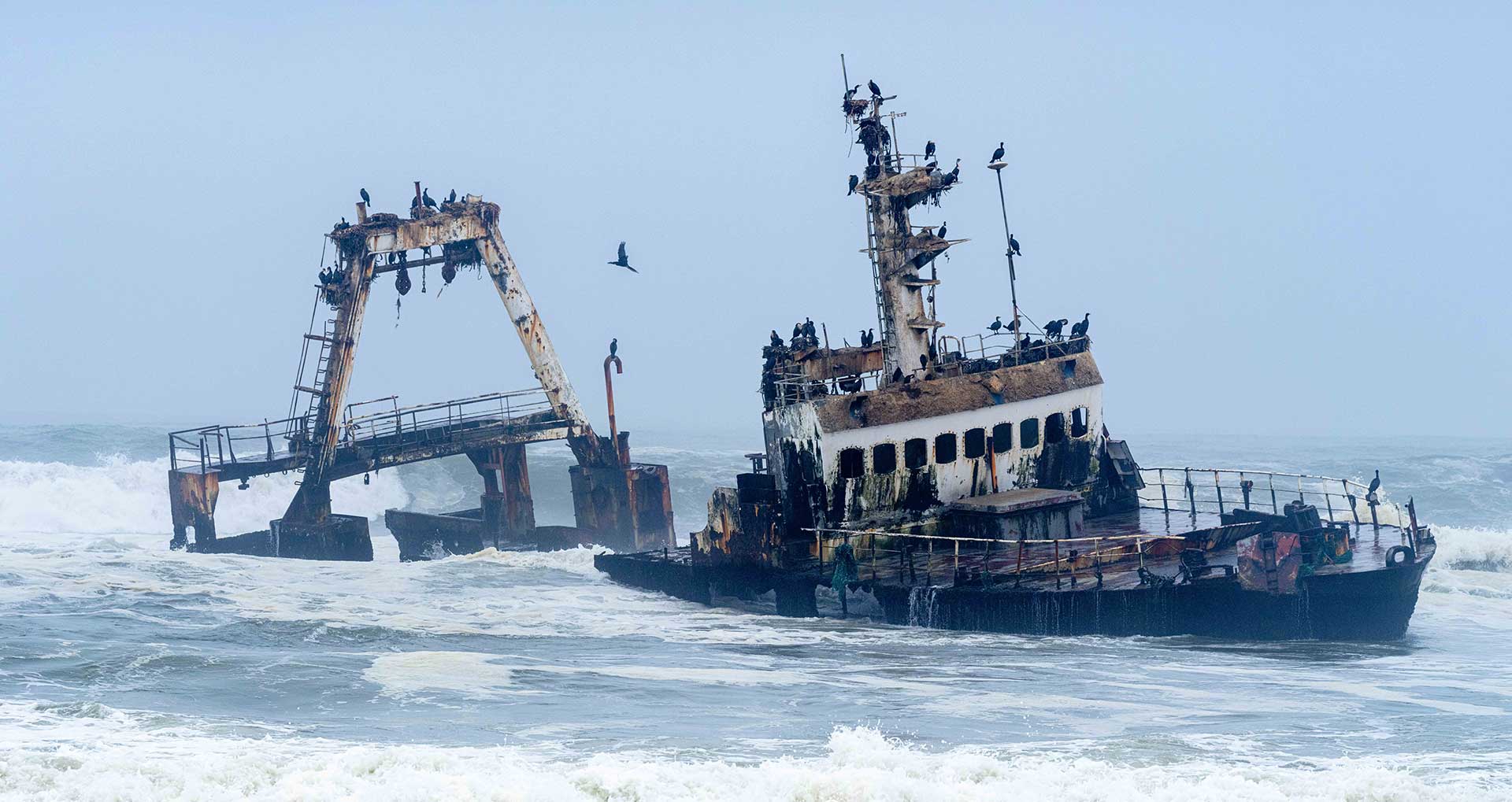One of the world’s oldest deserts, the Namib Desert, meets the Atlantic Ocean in northern Namibia. Namib translates to “vast place”, which is a very suiting description for the miles of beach and dunes this collision stretches along. This vast place is home to hundreds of shipwrecks and countless whale bone remains along the shore. Known as the Skeleton Coast, many ships lost their way in the thick fog, running aground to be torn apart by the harsh waters. But the area isn’t scattered with remains alone, for there is much life here as well.

The jackal is one of the species found in the Namib Desert. Inhabiting much of Africa, travelers are bound to run across a jackal at some point while on safari. Because they lack the rarity factor, these cunning creatures are often overlooked or dismissed. They are skillful hunters and, perhaps, one of the most daring species, as they venture under the lion’s nose to snatch the craps of those who’ve fallen prey to one of Africa’s top predators.
Key Takeaways:
- The Namib Desert meets the rushing waves of the Atlantic Ocean, scattered with countless remains of whale bones and shipwrecks.
- The Atacama Desert meets the Pacific Ocean where you will see dramatic cliffs drop into long beaches.
- The Arabian desert meets the Red Sea and is very essential for shipping Persian Gulf oil which is important for the world’s economy.
“[N]one are as stunning as the Namib Desert. This UNESCO World Heritage Site is an inhabitable piece of art.”
Read more: https://www.fodors.com/news/photos/10-stunning-places-where-the-desert-meets-the-ocean


